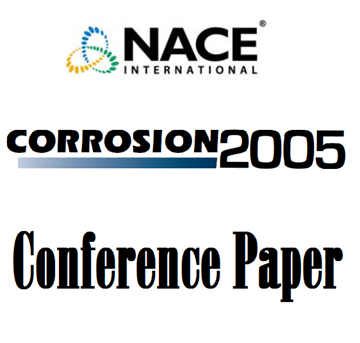Search
Pipelines, Tanks, and Underground Systems
View as
Sort by
Display
per page
05157 Critical Review: Fas Assessment Methods for Crack-Like Flaws in Pipelines
Product Number:
51300-05157-SG
ISBN:
05157 2005 CP
Publication Date:
2005
$20.00
06053 MULTI-LAYER PIPELINE COATING SYSTEMS: A NEW LOOK AT THE EVALUATION OF CERTAIN QC TESTS AND CRITICAL APPLICATION PARAMETERS FOR FBE PRIMERS
Product Number:
51300-06053-SG
ISBN:
06053 2006 CP
Publication Date:
2006
$20.00
06163 CATHODIC PROTECTION OF PIPELINES IN HIGH RESISTIVITY SOILS AND THE EFFECT OF SEASONAL CHANGES
Product Number:
51300-06163-SG
ISBN:
06163 2006 CP
Publication Date:
2006
$20.00
07127 Investigating Ductile Iron Pipelines
Product Number:
51300-07127-SG
ISBN:
07127 2007 CP
Publication Date:
2007
$20.00
07132 In-Line Inspection Performance Verification
Product Number:
51300-07132-SG
ISBN:
07132 2007 CP
Publication Date:
2007
$20.00
07496 New Improved Method for HISC Testing of Stainless Steels under Cathodic Protection
Product Number:
51300-07496-SG
ISBN:
07496 2007 CP
Publication Date:
2007
$20.00
07539 Case History of Dual Laminate System Life Cycle Cost Analysis vs. Metallic Piping
Product Number:
51300-07539-SG
ISBN:
07539 2007 CP
Publication Date:
2007
$20.00
08150 A Case Study: ERW Seam Weld Failure
Product Number:
51300-08150-SG
ISBN:
08150 2008 CP
Publication Date:
2008
$20.00
08672 Development of an Equipment Integrity Management System for the Nexen Long Lake Commercial SAGD Facility
Product Number:
51300-08672-SG
ISBN:
08672 2008 CP
Publication Date:
2008
$20.00
08675 Severity of Stress Corrosion Cracks in Pipelines - Categories and Responses
Product Number:
51300-08675-SG
ISBN:
08675 2008 CP
Publication Date:
2008
$20.00
09043 Coatings Used in Conjunction with Cathodic Protection - Shielding vs Non-shielding Coatings
Product Number:
51300-09043-SG
ISBN:
09043 2009 CP
Publication Date:
2009
$49.00
09050332 Predictive Model for Pitting Corrosion in Buried Oil and Gas Pipelines
Product Number:
32141-09050332-SG
ISBN:
09050332CJ
Publication Date:
2009
$13.00












